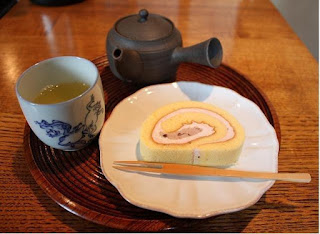Most of the Japanese green tea is steamed to
stop its oxidation. But some areas, especially in Kyushu area, pan-firing
method is used instead of steaming.
This called “MIYAMA” is one of the
"kama-iri (lit; kama=pan, iri=firing)" tea produced by Mr Kajihara in
Kumamoto prefecture, Kyusu area.
The tea plant used for "MIYAMA" was grown from
seed in the wild mountains. We call this "zairai", or wild tea. Since
the cutting, or ready-made plants are often seen recently, the production of wild
tea. or grown from the seed are very small throughout the nation.
After the leaves are plucked, they are
withered a bit. which can add a bit of extra aroma. Since most of Japanese
green tea don’t require withering process, withered green tea is still rare in
Japan.
- Pan-fired tea is special as Japanese green tea.
- Wild tea is not that common.
- Withered green tea is getting popular now, but
still not that seen everywhere………but this tea has everything:-)
Worth trying!
*Green Farm KAJIHAR ; http://www.kajihara-chachacha.com/






